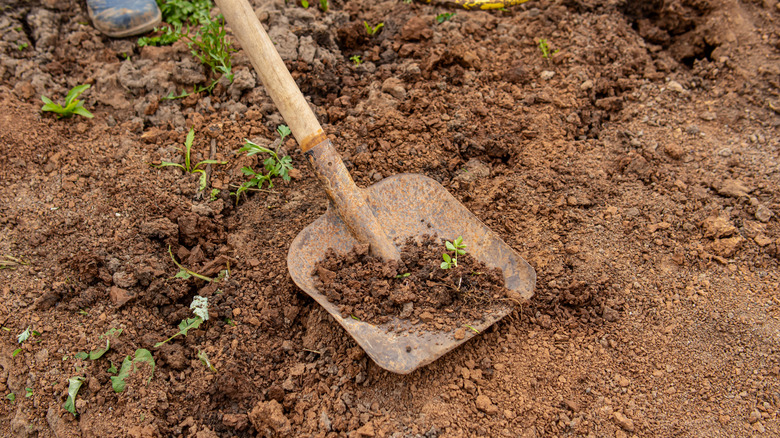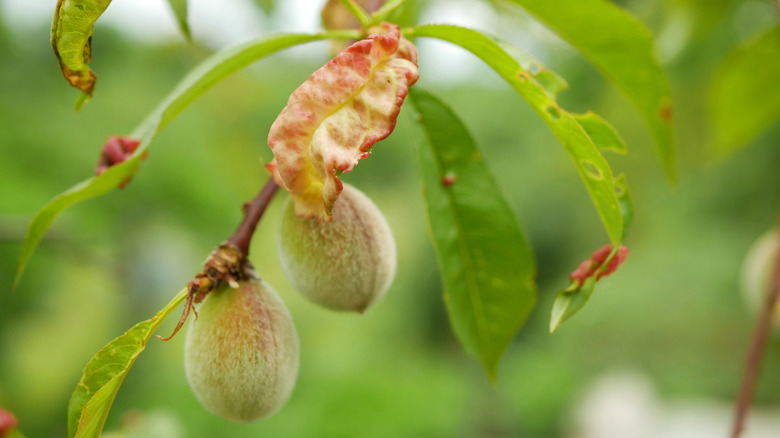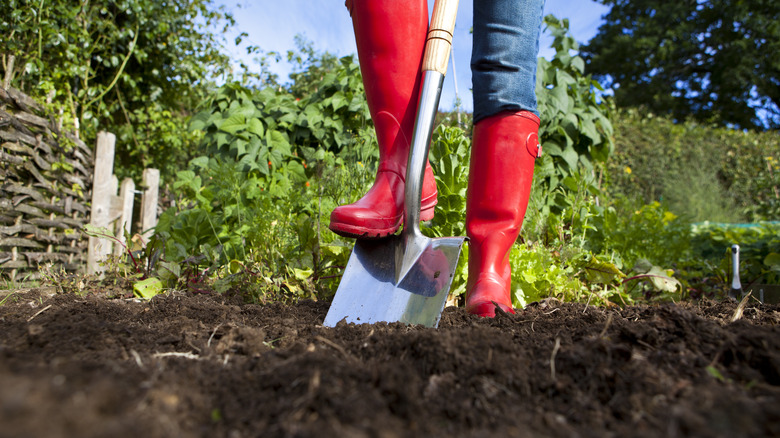The Popular Fruit Tree That You Should Avoid Growing In Clay Soil
Clay soil is often a nightmare for gardeners to work with, given its labor-intensive nature, poor drainage, and compactness. Although there are certain plants that thrive in clay soil, one fruit tree is completely averse to it: Peach. Peaches, one of the most rewarding fast-growing fruit trees you'll want to plant in your yard, are very sensitive to wet soil and easily fall prey to a number of fungal diseases, iron deficiency, and root rot when planted in heavy clay.
Peaches (Prunus persica) are non-native, stone fruit trees that are hardy in USDA Hardiness Zones 5 to 8. They like a lot of sun and good water drainage for maximizing fruit production. Peaches are known to grow best in sandy loam soil with the pH hovering around 6.5. Since the presence of calcium in clay soil can end up increasing its pH levels, the alkalinity of the soil is yet another factor that makes it difficult for peach trees to grow in clay.
Clay soil can cause iron chlorosis in peach trees
Apart from root rot and other common fruit tree diseases, clay soil can cause a condition known as iron chlorosis in peach trees, which can lead to yellowing of leaves and even plant death in some cases. The condition becomes prevalent in new leaves, where the tip of the leaf starts yellowing, and then spreads to older leaves. Iron is responsible for a number of essential life activities, such as the formation of chlorophyll, the production of enzymes, nitrogen fixation, and plant metabolism. Iron deficiency can be a massive headache for gardeners, and peaches are one of the most susceptible plants. According to a study published in Environmental and Experimental Botany, even a moderate amount of iron deficiency caused a significant drop in the yield of peach trees; and an increase in chlorosis levels signaled a severe decrease in fruit size.
What is interesting, is that most soils are not heavily deficient in iron. Even in a clay-heavy soil, it is not the nutrient composition but the structure that makes it difficult for the peach trees to absorb iron. Clay soil lacks organic matter as well as some of the trace nutrients that are crucial for plants to absorb this vital nutrient. Furthermore, clay soil is also known for its compact nature and the ability to hold moisture for long periods. This can make the roots suffocate due to lack of air and make things even worse for absorption.
What to do if you have clay soil
Although peaches prefer sandy and loamy soil texture, not everyone is blessed with this type of soil in their yard. If you have clay soil, but your love for self-grown peaches is great, there are a few things you can try to improve heavy clay soil in your garden. For instance, working some organic matter into the soil can make a huge difference. Pine bark, gypsum, and composted leaves are some of the best materials that can fix the problems of compaction and drainage in heavy clay. However, you must refrain from adding sand as this can exacerbate the problem further.
All you need is 3 to 6 inches of organic matter to be added to the top 10 to 12 inches of topsoil, since this is the length to which most plant roots grow. From then on, you can add up to 3 inches of organic mulch every year to further improve the soil. Raised beds or berms are also great for improving drainage in clay soil. Remove any grass underneath the bed and make sure the soil is loose for the roots to penetrate.


